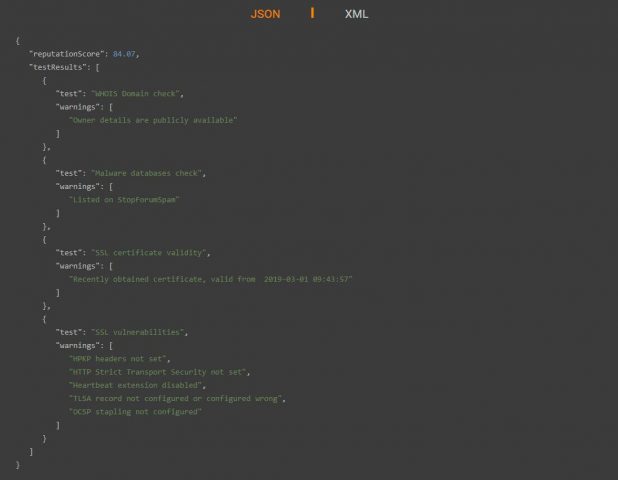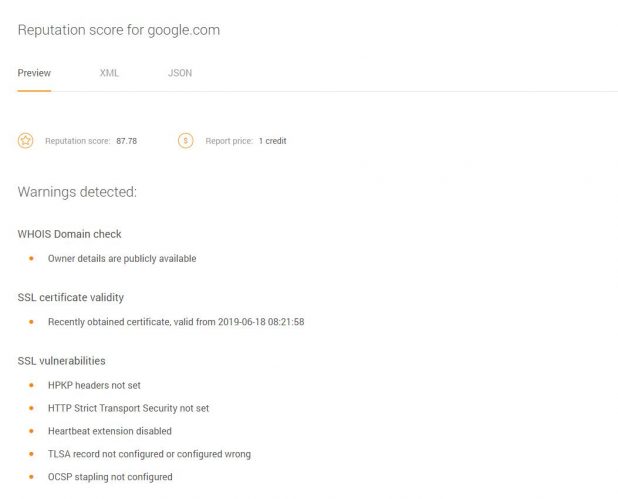As scary as it may seem, everyone is a target on the Web. Worse, your susceptibility to cyber-attacks, when not promptly addressed, marks you not just as a target but can even lead others to consider you as a threat.
How so?
When mismanaged, for example, some of your email communications can end up being perceived as spam by servers refusing to deliver your emails. In the long run, Internet service providers (ISPs) may even decide to block your domains altogether. Sounds like something to avoid, and here’s where domain reputation comes in and allows you to plug the holes that leave you open to suspicion and attacks. Let’s see how.
Domain Reputation Is a Measure of Your Trustworthiness
First off, domain reputation is a precise estimation of whether you as a company can be trusted to do business with on the Web or not. It tells others if your domain is free from malware or malicious connections, or if it’s been involved in any questionable activity in the past. It can warn or encourage prospective customers or business partners who may have no previous experience dealing with you and therefore have nothing else to base their decisions on.
Furthermore, your domain reputation can inspire confidence since it shows your domain’s ability or readiness to repel cyber threats and support marketing efforts. But the problem is that such factors like host configuration problems, malware exposure, connected domains, and so on, can affect your domain reputation and must, therefore, be thoroughly investigated before they get out of hand.
You can handle these issues manually one by one, or you can get a comprehensive assessment of your domain reputation through a domain reputation API service. The latter allows you to test a domain through multiple parameters — most of which are scrutinized across several feeds coming from major data sources plus an external configuration audit procedure using threat intelligence. We’ll talk about it more in detail in the next sections, but before we do, let’s discuss another important aspect of checking one’s domain reputation.
Checking the Safety of Other Domains
While maintaining a positive domain reputation score, it is equally important for organizations to use a domain reputation API to oversee the ratings of the domains that they interact with to make sure that they can be trusted.
One reason is that this can help companies save time and money by reducing the risk of potential threats. For instance, employees can efficiently pay attention to the safety of the websites they deal with, mitigating the dangers of interacting with malicious sources. C-level decision makers can also use the information to guide them in making safe investments and acquisitions.
But the technique is also relevant for the following reasons:
- Protection from dangerous domains – Huge losses result from data breaches when you interact with fraudsters. Checking for domain reputation allows you to monitor the flow of data traffic and avoid potentially malicious domains.
- Taking actions against risky domains – Domains, IP addresses, and URLs that are deemed dubious due to their domain reputation scores can provide leads into their malicious activities and cohorts. A domain reputation API allows users or automated security safeguards to have a basis for deciding whether to block, allow access, or resolve a connection subject to certain conditions. Forensic investigators are also able to focus on areas that are potentially malicious.
- Safeguarding e-commerce operations – The practice of making automatic domain-to-domain transactions can be disastrous and lead to huge losses when dealing with dangerous domains. A check with an entity’s domain reputation can prevent such costly mishaps.
Leave No Stone Unturned
Now let’s see how a domain reputation API works. When a domain or an IP address goes through a domain reputation software it’s not only subjected to a battery of tests. It may be more precise to say that it goes through the eye of the proverbial needle, as the domain reputation API leaves no stone unturned to gauge its worth.
This instrument investigates domains on their different properties, beginning from the times they were first registered in order to uncover any probable risks or threats that may have been overlooked. Here are the tests being applied in the process:
- WHOIS and DNS name servers match
- WHOIS domain status
- WHOIS domain check
- SSL vulnerabilities
- SSL certificate validity
- Malware databases check
- Host configuration issues
- Name servers response
- Name servers configuration meets best practices
- Name servers configuration check
- Mail servers configuration check
- Mail servers response
- Mail servers Reverse IP addresses match
- Mail servers real-time blackhole check
- Open ports and services
- Potentially dangerous content
- SOA record configuration check
As a result, a list of warnings that have been detected during the course of the tests will be provided to users supplying them with various insights.

A WHOIS domain check, for instance, may reveal that a domain owner’s details are publicly available which means that the entity is potentially open to identity theft.
Or let’s say the API discovered that a domain’s SSL certificate may have been recently obtained or is subject to serious vulnerabilities such as not forced HTTPs connections, or the Heartbeat extension being disabled. The first point out to the lack of security while the second tells you that the network could be damaged by a Heartbleed bug capable of stealing sensitive information.
These are just a few examples to illustrate you the thoroughness with which the tests are conducted. Moreover, it’s important to understand that no matter, if it’s your domain being scrutinized or that of your potential partner, keeping an eye on such details, is crucial in order to prevent potential issues.
The Result: Domain Reputation Score

So what happens when the tests are over? Well, the exhaustive testing process results in a domain reputation score that ranges between 0 (low risk) and 100 (high risk), making it easy to identify risky domains — i.e., those with malicious owners, misconfigurations, or those containing potentially dangerous content, just by looking at their scores.
Moreover, the rating is based on the analysis of numerous factors. They include the WHOIS records of the domain being tested, the name server’s configuration, the infrastructure of the target domain’s IP address, the content of the website and how it’s related to other domains and the host configuration, and the result of a Reverse IP lookup. Also looked into are an assessment of the danger posed by the domain based on numerous malware data feeds from all over the Web, the configuration of DNS MX records and their corresponding mail servers, and the different aspects of the domain’s SSL certificate including its connection and configuration.
A positive domain reputation is, therefore, earned. It does not come by accident but is the reward of diligent and proactive efforts to ensure a domain’s safety and security not just for its own sake but also for those of the other domains that it comes in contact with.
Key Benefits of Keeping an Eye on Domain Reputation
Now that we have an understanding of how a domain reputation API works and where it can be applied, let’s gather all the reasons why monitoring domain reputation with the help of such software can be useful.
Stay ahead of attacks
Regularly tracking your domain reputation is essential because of the rapidly-changing nature of attacks. Periodic checks on your systems are required to assess their vulnerability to emerging dangers and, as a result, to keep your domain reputation score high.
Secure email deliverability
Maintaining a positive rating is also a major factor in ensuring the delivery of your emails. Messages sent out from domains with low reputation may not make it to the inbox, eroding the results of your marketing initiatives or lead to customer dissatisfaction when transactional emails are not received.
Avoid mail server issues
A domain reputation API allows evaluating and fixing mail server configuration issues, thus raising your deliverability profile and facilitating the uninterrupted flow of communication to and from your organization.
Get precise results
The resulting score is an accurate measure of a domain’s trustworthiness based on hundreds of parameters and numerous tests. Users can rely on the data to identify dubious domain owners and IP addresses and avoid putting themselves at risk.
Use as a forewarning instrument
Domain reputation API allows you to assess domains, subsequently blocking or avoiding doing business with them on the basis of the probable risks that their resulting domain reputation score may pose.
Instantly check results
Domain reputation API is a quick-response tool that can be easily integrated into your existing business processes and can instantly provide an assessment of a domain’s risk profile.
Quick Tips for Making a Query
To get the domain reputation score of a domain or IP address, you need to secure a personal API key from a provider’s website. You then have to input the domain’s name or IPv4 address into the domain reputation API which will accurately assess its score using the parameters and tests that have been discussed earlier.
You can also check your target domain using ‘fast’ or ‘full’ mode. Fast mode would conduct heavy testing while data collectors are disabled. Full mode, on the other hand, processes all the data and tests. The output is well-parsed and available in either JSON or XML.
Your domain reputation can enhance your business profile and help you score points on the Web. You can individually review the different parameters that combine and build your domain reputation score, or you can use the Domain Reputation API to simultaneously check external hosts as part of a comprehensive cybersecurity risk profile.




